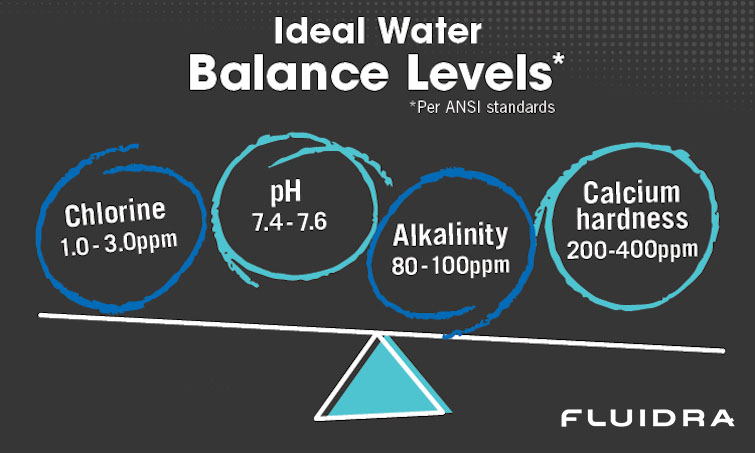Why Is My Pool Green?
May 06, 2020 at 09:00 AM

When you imagine your pool, you see a crystal clear oasis of serenity, glistening in the sun, inviting you to jump in for a refreshing swim any time of the day or night. But bodies of water that have nowhere to flow tend to collect bacteria and algae, if not properly maintained. Both bacteria and algae, which grow over time, can change your pool to a very unserene color of green.
The level of effort put into getting a green pool cleaned up depends on how long the buildup has been allowed to progress. Since an ounce of prevention is worth a pound of cure, it’s good to know what causes a green pool in order to avoid the mess altogether.
Keep your pool clean by keeping an eye on these potential issues:
Little or no chlorine in the pool - Chlorine kills bacteria and algae. If there’s not enough chlorine, your pool can turn green.
Solution: Test your water (or have it tested) and balance your chemicals (or have your pool pro bring water chemistry to within proper levels).
Chlorine bound by chloramines - chloramines are the chemical byproducts that build up in the water when it's improperly treated with too little chlorine.
Solution: Test your water and do a chlorine shock treatment. See your local pool pro for more information (amount of chlorine you add will depend on the size of your pool and other factors).
pH Value too high. - pH is a measure of how acidic or basic the water is. A number of different factors can contribute to a high pH level in a swimming pool. Everything from weather to oils, dirt, and cosmetics affect your pool water balance - in short, anything that comes in contact with your pool water. When the pH level of the pool is too high, it causes the chlorine to become ineffective.
Solution: Test your water and balance your chemicals to adjust pH values.
Not enough cyanuric acid (CYA) - CYA is a water conditioner often referred to as “sunscreen for chlorine” that prevents chlorine evaporation by the sun.
Solution: Test your water and balance your chemicals.
Not enough circulation/filtration time - Circulation of the pool water keeps it filtered and clean. It also helps to spread the chemicals you add to the water. Think of a cup of coffee after adding cream and sugar. It needs to be stirred. Same with the chlorine and CYA that goes into your pool. But for how long? The typical time is one hour for every ten degrees of air temp as a starting point. If it’s 100 degrees out, the pool pump needs to be running at least ten hours a day.
Solution: Adjust circulation time based on weather patterns and pool usage.
You might also want to keep a calendar for routine maintenance and set reminders to check your water balance. For more convenience, you can add easy to use accessories like the Blueriiot™ Smart Water Analyzer which automatically takes readings and sends them straight to your phone. The Blueriiot app lets you view the chemical levels in your pool, sends notifications and alerts to you (and your pool pro if you choose) when your water balance is off, and even walks you through how to fix the issue yourself.
If you’ve already got enough things to keep an eye on, hire a pool technician to regularly vacuum your pool, check chemical levels, and clean your filters. If you discover your pool has turned green, it’s a good idea to talk to an expert to make sure you are using the correct products to treat it. It’s not difficult to treat the problem, but you’ll want to make sure that you’re doing what needs to be done to bring your pool back to normal.
Editor’s note: This post was originally published March 2017 and has been updated for accuracy and comprehensiveness.